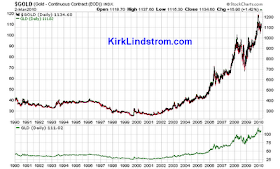Today in Shanghai General Motors, GM, said its EN-V concept car will use batteries made by Valence Technology Inc (VLNC - Quote and charts). As reported here, GM and its Chinese partner SAIC will showcase the "Electric Networked-Vehicle" launched Wednesday in their joint pavilion at the Shanghai Expo, which opens May 1 and runs for six months.
The EN-V, pronounced "envy," us a two-wheel, two-seat all electric car with a top speed of only 40 kilometers per hour (24 mph) has a small footprint designed to be driven in congested city streets.
The EN-V, pronounced "envy," us a two-wheel, two-seat all electric car with a top speed of only 40 kilometers per hour (24 mph) has a small footprint designed to be driven in congested city streets.
"By 2040, GM says, there will be 1.2 billion cars on Earth, and 60 percent of humanity will be living in cities. For megacity countries like China, the explosion in use of conventional automobiles has already turned into a nightmare of smog, jammed roadways, and nonexistent parking."This is great news for shareholders of Valence Technology, which has a factory to build its batteries in China:
"The 1.5 meter by 1.5 meter (about 5 foot by 5 foot) EN-V appears to build on GM's earlier work with Segway Inc. in developing the PUMA, or Personal Urban Mobility and Accessibility, vehicle. It will use the same types of battery cells as the Segway and the same battery supplier, Valence Technology Inc., said Christopher Borroni-Bird, GM's director of advanced technology vehicle concepts."For commentary on Valence including my recommended buy and sell levels, read "Kirk's Investment Newsletter."
Disclaimer: I have been accumulating Valence in my newsletter explore portfolio and personal portfolios. From buying and selling to take advantage of its volatility, I have good profits already in VLNC with a "break-even" price well below today's price. In an attempt to increase my overall return, I plan to continue to trade around this core position to get my original investment out and then generate cash from the volatility with the remaining "profit shares." I expect Valence to be a very volatile stock so risk control is essential. For more, see Kirk's Two Investment Letters.
More Articles:
- December 16, 2008 Valence to Supply PVI with Lithium Phosphate Energy Storage Solutions (Lithium Ion Batteries)
- February 16, 2008 OEMtek Uses Valence Batteries for 100 MPG Prius Conversion
- February 08, 2008 Valence Technology: A Green Stock with Potential









